Forms, Storms and 'Why I Am Not a Painter'
The difference between the idea and the actual thing.
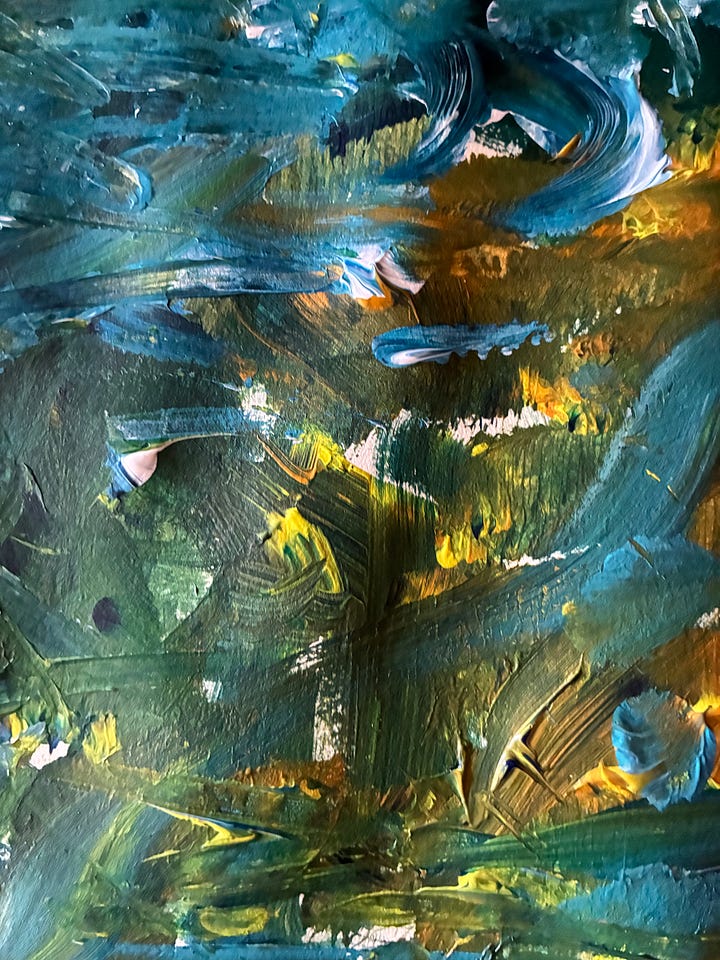
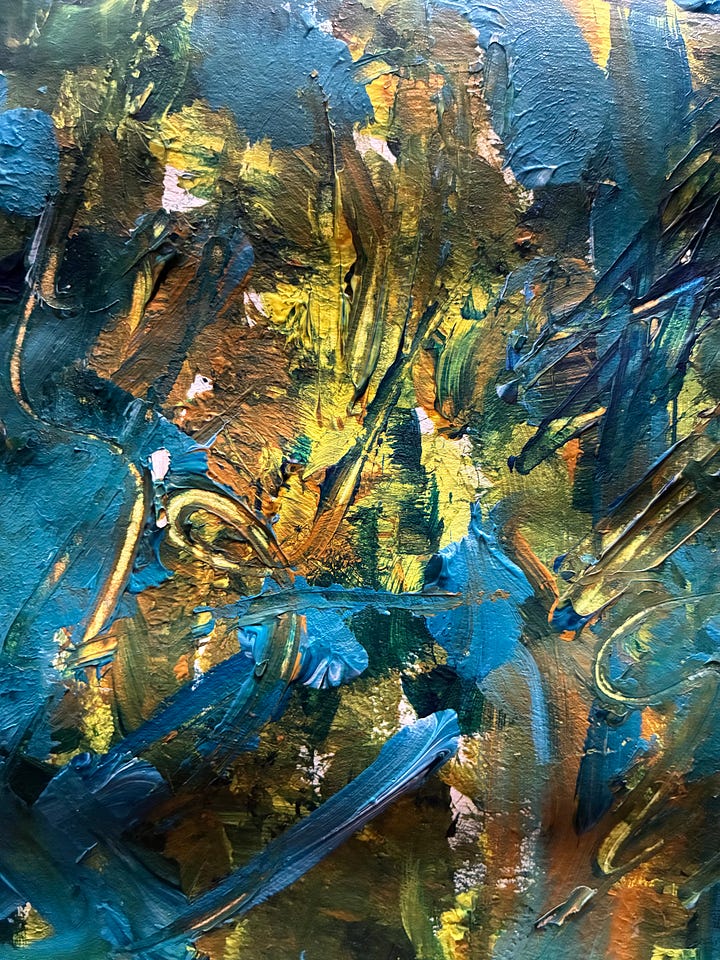
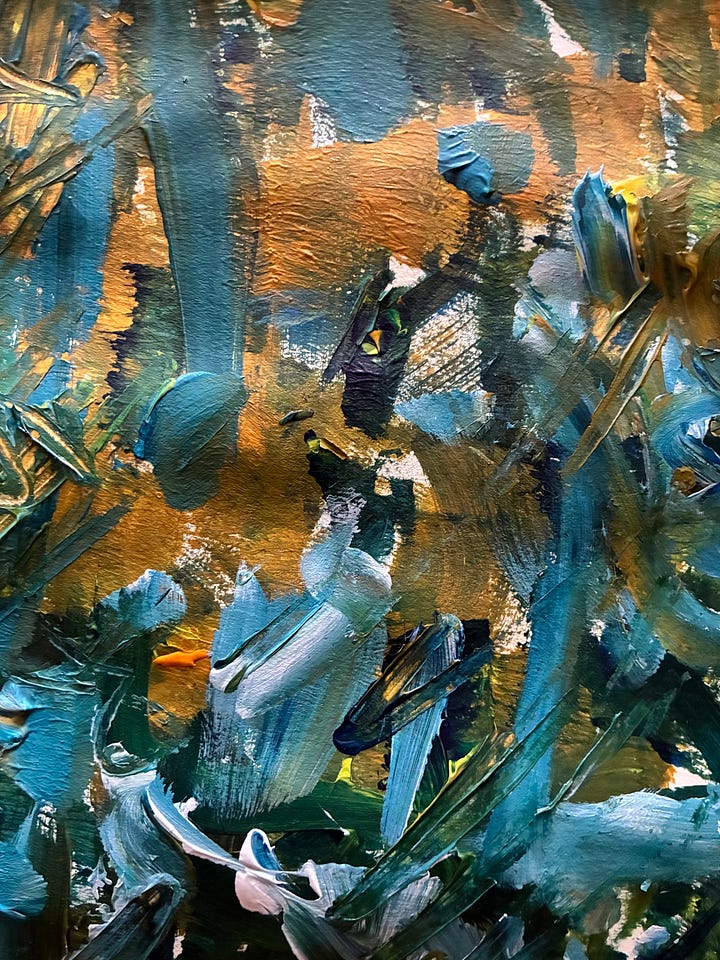
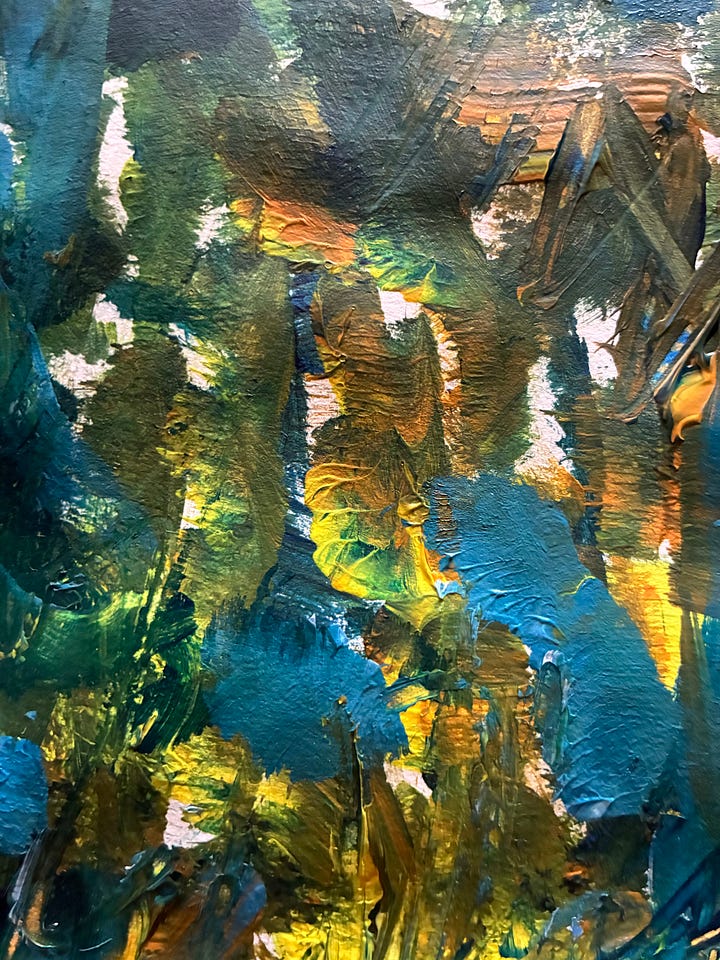
Two weeks ago I made a commitment. I gave a 15,000-word text of my writing to a Sympathetic Reader who has agreed to help me "figure out what I am doing" — by that I mean figure out what I had thus far written and how I might develop or refine it into something nice, like art.
I often write without a plan or a guardrail and what results — what it is “about,” what the meaning or purpose of it might be — is not clear in the doing. I have to figure it out afterward and sometimes I need help. I used to be ashamed to say I needed help to write (since I've made this pretty nice living helping others do just that), but now I'm not. It's just the way it is. I don't really think anyone works alone.
In short, I had a lot of words, a mass of them, and I didn't know exactly what to do with them. I did know, though, that I didn't want to keep putting them aside or throw them out. OK. The commitment I made after Sympathetic Reader read my text was that we would meet again in a few weeks but in the meantime I'd "do something" with this text — shape it, prune it, cultivate it, grow it, something that would render it something other than what it now was, hopefully something better, more cogent, coherent, readable.
Ordinarily I'd spend those few weeks not doing that. My habit is just moving on to whatever is next, new reading and writing, whatever catches my attention, which doesn’t last very long in any case. I wouldn't keep going back to a thing — a thing I almost randomly pulled together for reasons I wasn't aware of at the time — without a practical reason.
The image I had in my mind in doing this was of a painter in a studio who had begun work on a large canvas. He does various work there, sketching and beginning forms but nothing quite clear. He keeps going back day after day working to see what emerges. It occurred to me at this point that the painter need not be committed to any idea in particular at this point (unless he or she is the sort of painter who knows what to paint beforehand and just paints it). The painter can just as reasonably be committed to the canvas, that particular piece of wood and stretched material sitting there. An object. A thing.
I liked this idea because it simplified and concretized the idea of making art. It took the theorizing out. There is no need to commit yourself to the "idea" of what you are doing or your "vision" — some preexisting notion. You can just as easily and productively commit to the object, the material you are making it with or on which you are doing it. I started to see how that might apply to this mass of words I’d begun with, what Sympathetic Reader called a “tangled draft.” I started to think of the tangled draft as a thing.
The painting idea returned one morning last week when, not wanting to bother with words but just do something enjoyable, I took out my daughter’s middle school acrylic set and a large pad. The pad is really a drawing pad. The paper is too thin to hold paint without buckling but I don’t care. I choose three brushes and four colors — ochre, yellow, blue and white. I squeeze out a bit of each and start dabbing, painting. Abstract. I am not a painter. I don't know how to draw or paint, at least not competently, representationally. I am just making the strokes and seeing how the strokes look. If I see an unpainted space that I think needs filling I put something there. If the color is too flat, too monochrome and lifeless, I dab another color in and swirl it. Until I think it looks nice, the flow is pretty or captivating or hmmm.
Anything that calls the next dab or swirl or stroke forward does so without asking me. It just does. And soon by compulsively looking to fill in all the spots I have a big dark swirling chaotic blob. Not a good painting but I don’t care because I am not a painter and don’t paint to be good, only for pleasure, though weirdly I am inordinately drawn to painters and just ordered a 35 dollar book of writing by a painter I never heard of, Jack Whitten, but read about because he has a show at MOMA. I only had to read the article about his work in the NYRB to know that I wanted to know the work more intimately, to draw nearer to the artist through it, human to human, even though he is dead. More and more I find I am communing with the dead and maybe that’s what living (which is also dying) is — your awareness of the dead and their afterlives grows, they begin populating your consciousness and waking hours for longer and longer stretches. Their afterlives are the deeds and living works that survive them and reach us, influence us, and our willingness to conjure them through memory and help them in their afterlives — by thinking about them, writing about them, talking about them, meditating or praying over their work or intentions that were just like yours or mine, swirling in those same pools of energy, feeling their presence mingling or commingling with yours — this is what keeps art going.
The book by the artist is coming in the mail as I write this and I am so excited — and I haven’t been excited about anything for weeks. Just mid-summer blank. But now this book by this dead painter made by people who really love books is coming to my door tomorrow and I feel better about life, about the day.
Anyway this painting I did is terrible, like not even good enough to get hung up in the hallway outside the second grade art room at PS 22, but I’m looking at it more closely now, zooming in to certain spots. Here I find details that capture the movement of my hand, that delineate the hair of the brush and the texture of the paint in little waves and swirls, some of them like the waves in those Classical Japanese paintings with so few elements that work on you like haiku but always one of them is the sea, and the painting is bad, an ugly blob like the ones I made finger painting when I was a kid but I see the details of the painting are in their own way quite nice so I photograph some of them with my phone. The light on the painting is not quite right or even but who cares— and I put them together digitally on the page next to each other, four boxes of swirl and leaping activity.
It seems, given that my standards for painting are so low, that I have four little paintings— two diptychs or a quartet (?) because I don’t think there is a word for an aggregate of four images that would follow triptych — so something smaller and nice came out of this supposedly random and not-good big thing. The blob.
I call the four paintings Storms.
And so as Frank O’Hara writes in "Why I am Not a Painter," we — the poets, the wordsmiths — and they — the painters — are two different animals in some ways but also we the poets and they the painters are doing the same work — and he, Frank, and his friend Mike Goldberg were doing the same work when Mike was painting "Sardines" and Frank was writing poems about orange that don't have the word orange in them (I’m not going to explain this just go read the damn poem) and this blob of writing that I gave to Sympathetic Reader to read that was causing me anguish because I put so much of myself into it but it still sucked like the blob painting actually might have little spots in it that are nice, that had good movement or flow and that swirled attractively here or there and shined like in the bad painting and that I should or would zoom in on them in the text, the good words, perhaps take little photographs of them as I did with the bad blobby painting and turn them into something else. It would be like finding a few coins or an attractively made button or a marble whose inside held a tiny mysterious universe on an otherwise dirty street.
So I am committing to the canvas of the text. Just the file. Not the idea of it. The canvas. The actual thing.
______________
MUSIC I LISTENED TO WHILE WRITING THIS:




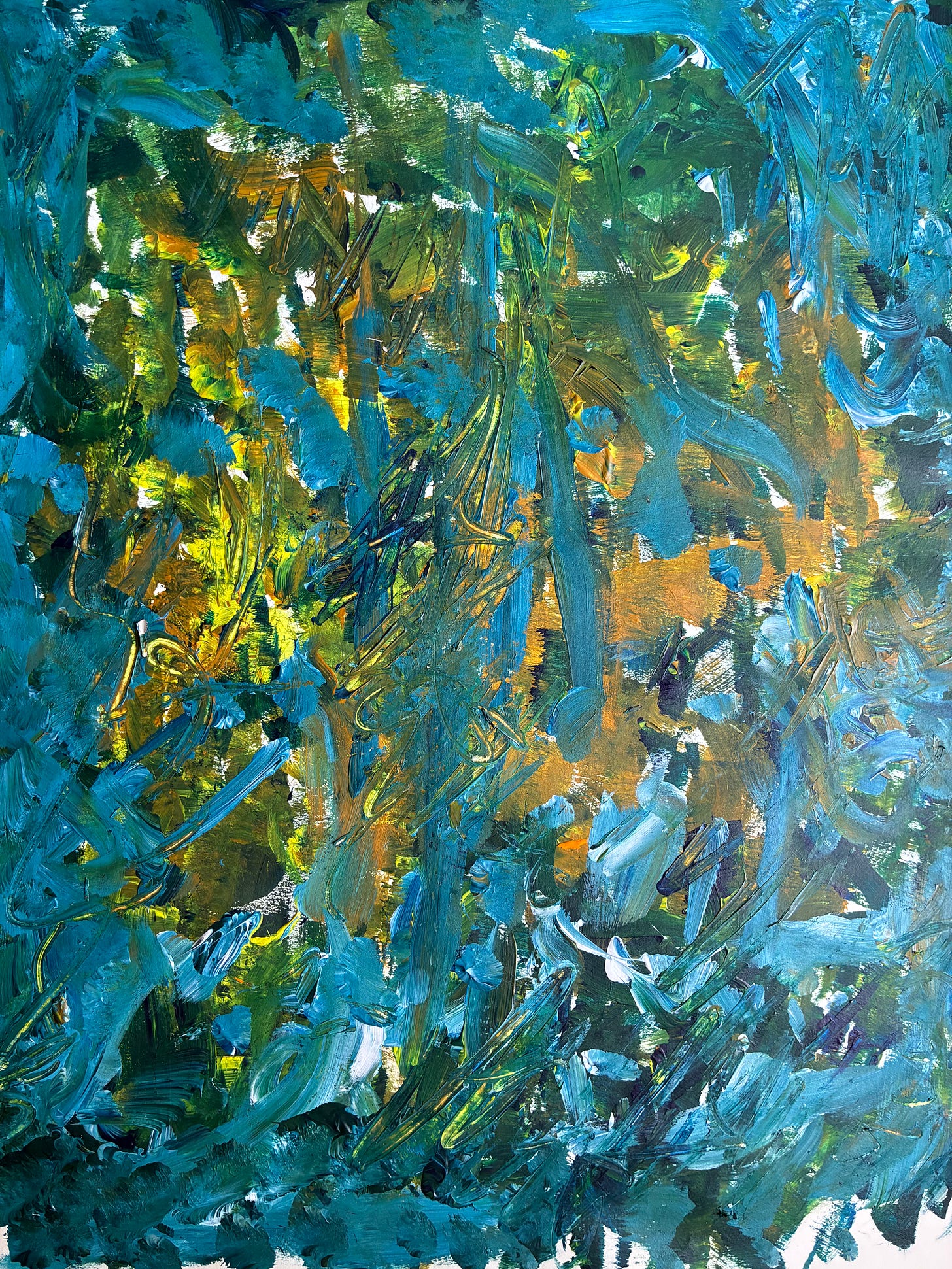
Well, to me these are paintings. Gorgeous textured swirling alluring full of life and color paintings!
They make me want to know the artist. They make me joyful. Ain’t that ART? I’d say yes!